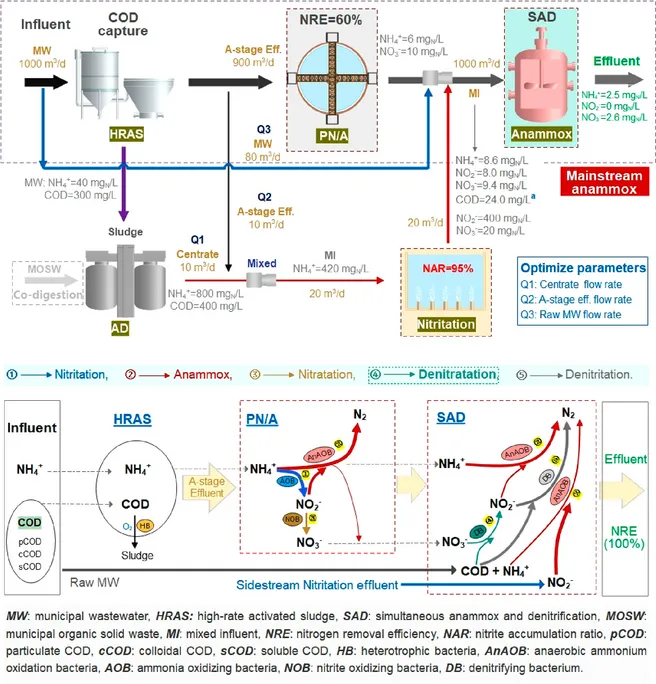The novel anammox process is gaining widespread attention and is considered the best alternative for current municipal wastewater treatment. Nevertheless, recent studies have demonstrated that the nitrogen removal efficiency of the anammox process would be very low when performed at a pilot scale treating real municipal wastewater; the effluent commonly contains high concentrations of nitrate because of the uncontrollable proliferation of nitrite-oxidizing bacteria under the varied environmental conditions and fluctuating substrate concentration. Given the recent demonstrations that mainstream anammox would produce excess nitrate in large-scale applications without well-controlled conditions, chemically enhanced primary treatment (CEPT) with a low efficiency in capturing soluble organic carbon appears to become very suitable as a preliminary treatment. Overall, the high-rate activated sludge (HRAS) process that is currently widely applied as the A-stage in the mainstream anammox process needs to be re-evaluated. The multiple advantages with the CEPT process as the primary treatment unit should be realized, which may be a holistic approach that aids in addressing the pressing challenge for current WWTPs in terms of high energy demand, poor effluent quality, increasing sludge production, and inefficient resource recovery.
